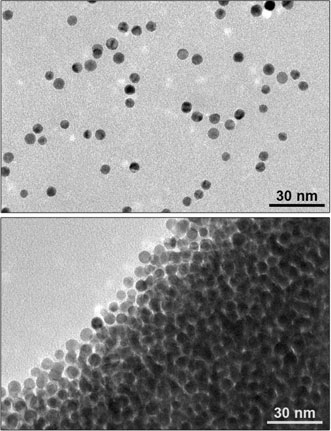
Light-Sensitive Medium Drives Nanoparticle Assembly
Light has long been used to trigger self-assembly of nanoparticles. A novel approach may be able to achieve the same end more reliably by focusing light on the medium containing the nanoparticles instead of the nanoparticles themselves.
The new technique is based on how nanoparticles react when illumination changes the medium's acidity. It could prove useful in applications including drug delivery and reversible writing of information, according to researchers at the Weizmann Institute of Science.
Its advantage over other techniques is that the nanoparticles aren't required to have light-sensitive coatings, which can degrade over time.

Nanoparticles in a light-sensitive medium scatter in the light (top) and aggregate in the dark (bottom). Courtesy of the Weizmann Institute of Science.
"We ran 100 cycles of writing and rewriting with the nanoparticles in a gel-like medium — what we call reversible information storage — and there was no deterioration in the system. So you could use the same system over and over again," said senior scientist and assistant professor Dr. Rafal Klajn. "And, although we used gold nanoparticles for our experiments, theoretically one could even use sand, as long as it was sensitive to changes in acidity."
In this case the medium was made of photoresponsive molecules called spiropyrans. Absorbing light switches the molecules to a form that is more acidic. The nanoparticles then react to the change in acidity by aggregating in dark areas and dispersing in light areas.
Klajn said a future application of this method might include removing pollutants from water: Nanoparticles could be made to aggregate around contaminants and release them later on demand. Likewise, nanoparticles could be used to transport drugs and release them in a controlled fashion.
The research was published in Nature Chemistry ( doi: 10.1038/nchem.2303)).
Published: September 2015